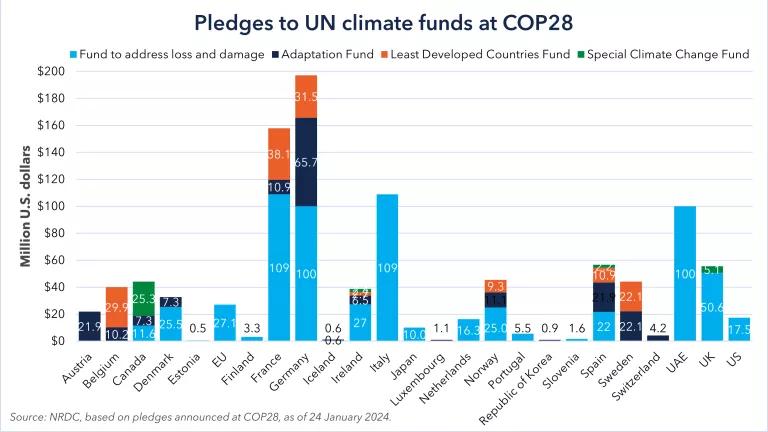Earth Day: How Green Are Latin American Countries?
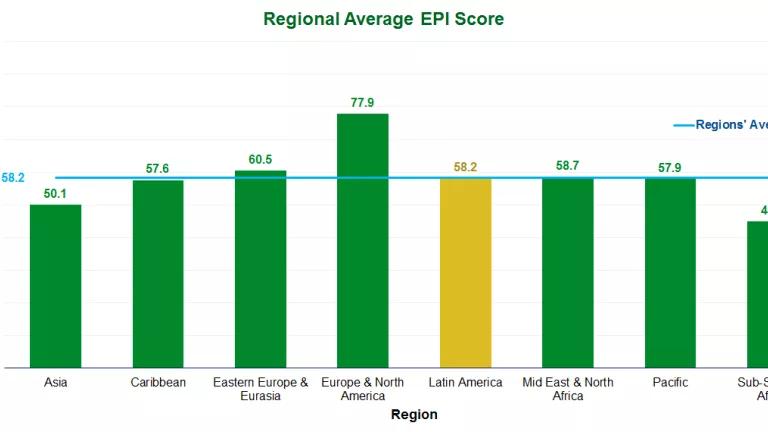
This blog was written by Andrés Anchondo. He works with NRDC’s Latin America Project researching on conservation finance to conserve Latin America’s natural resources.
On April 22, countries around the world honor planet Earth during International Mother Earth Day. This day is an opportunity for all of us to take stock of how well we are protecting the natural resources that we rely on for water, food, air, wildlife, trees, and livelihoods. A new global ranking of environmental performance allows us to take stock of how well countries in Latin America are doing in conserving nature and responding to environmental challenges. Costa Rica, known worldwide for its environmental stewardship, is the region’s greenest nation. Surprisingly, some nations that have experienced political turmoil recently, such as Venezuela and Bolivia, are near the top of the list globally when it comes to protection of biodiversity and habitat.
The Yale Center for Environmental Law & Policy and the Center for International Earth Science Information Network created a conservation assessment called Environmental Performance Index (EPI). It scores countries’ performance on 24 environmental indicators* from 1 to 100—with higher scores representing better performance—and then ranks them from 1 to 180 with 1 being the top-ranked country.
Here is what the EPI 2018 looks like for Latin America:
Latin America compared to other regions in the world
When it comes to protecting the environment, Latin America is squarely in the middle worldwide (Figure 1). It scored 58.2 out of 100; ranking 4th out of the eight regions assessed. This is not surprising given Latin America’s economic performance; according to the report, the “EPI shows a positive correlation with country wealth, as measured by per capita GDP.”
Within Latin America, however, countries obtained a wide range of scores on their overall performance (blue line in Figure 2), which translated to significant differences in the World Rank (WR). Costa Rica was the best-scored country with 67.9 points out of 100; ranking 30th in the World Rank. Costa Rica was among the top 20 countries on indicators measuring the exposure to the tiniest pollutants in the air (i.e., PM2.5), as well as the one measuring the CO2 emissions from the power sector. The lowest scoring countries were French-speaking Guyana with 47.9 points (128 in the world), followed by the Northern Triangle countries of Central America, Honduras (#114), Guatemala (#110), and El Salvador (#106). These countries were among the worst rated on indicators measuring lead exposure and nitrogen management in the agriculture sector.
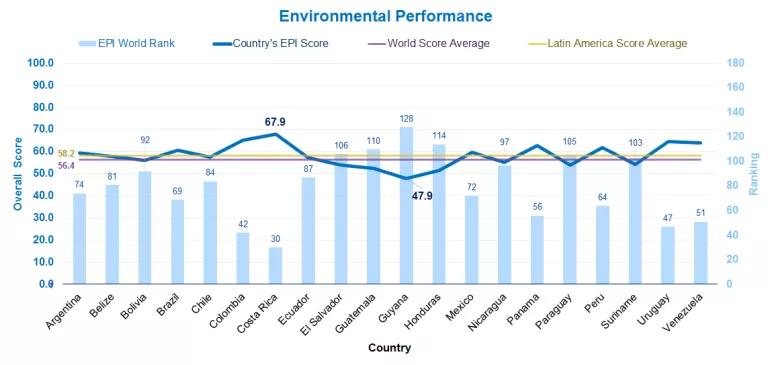
According to the report, high scores reflect commitments (e.g., policies and investments) to conserve natural resources, achieve human health, and reduce the production of greenhouse gases. Lower scores show the need for stronger national efforts or reflect weak governance or a poor economic performance.
The 24 assessed indicators are classified into 10 categories. Two of these categories are biodiversity/habitat and climate/energy. I elaborate on these categories since we in the Latin America Project pay especial attention to these four topics in the region.
Better than average on biodiversity and habitat (B&H) conservation
EPI 2018’s biodiversity and habitat category assesses countries commitment to marine and terrestrial protected areas and biodiversity and habitat conservation. To see the indicators follow this link.
Latin America is home to six of the ten most biodiverse countries in the world. The countries’ efforts to protect this biodiversity is reflected on their average score in this category: 76.5 out of 100 (yellow line in Figure 3), almost eight points higher than the world average (purple line). Venezuela (9th in the world), Belize (#22), and Bolivia (#43) were the Latin American countries with the best scores in the five indicators that make up the biodiversity and habitat category. Uruguay (136th in the world), on the other hand, performed poorly on most indicators in this category despite having the third highest overall score in the region (Figure 2). At the same time, although they did not do so well on this category, Mexico and Chile significantly expanded their marine protected areas during 2017, earning each a top score in the marine protected area indicator.
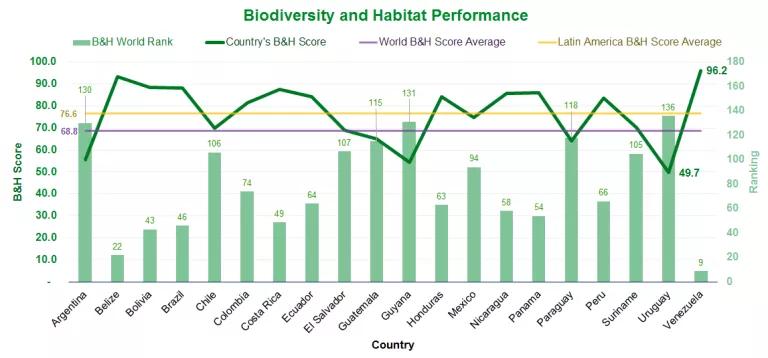
It could be better on climate and energy (C&E)
EPI 2018’s climate and energy category assesses countries’ CO2, methane, N2O, and black carbon emissions. To see the indicators follow this link.
Despite the fact that most Latin American countries are important producers of renewable energy and that they only contribute nine percent of global emissions, the region had an average score slightly lower (48.9 out of 100; yellow line in Figure 4) than the world’s average (light purple line). The region’s score would likely be higher if potential in clean-energy production or if global flows of carbon associated with imported consumer goods and services were taken into account or even if high rates of deforestation were abated. Uruguay, the 6th in the world under the climate and energy category, produced 78 percent of its energy from wind and large hydro in 2016. In contrast, Brazil was one of the countries worldwide with the lowest score in this category, given its especially bad scoring in the CO2 and black carbon emission indicators.
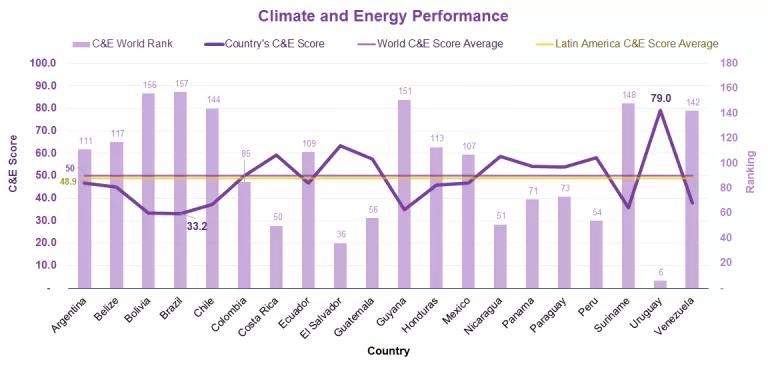
What to expect for Latin American countries in EPI 2020?
Countries in Latin America, especially the bigger economies, are experiencing political changes in 2018. This is an opportunity for incoming governments to strengthen the environmental governance that countries need to enhance their natural resources protection and reduce greenhouse gases emissions. It is also an opportunity for countries and multi-national corporations to boost investment in low-carbon and climate-smart sectors to ensure that future development is sustainable and resilient to climate change.
*NOTE: Each indicator and category has a different weight. To see their description and weight see 2018 EPI Variable Names.


